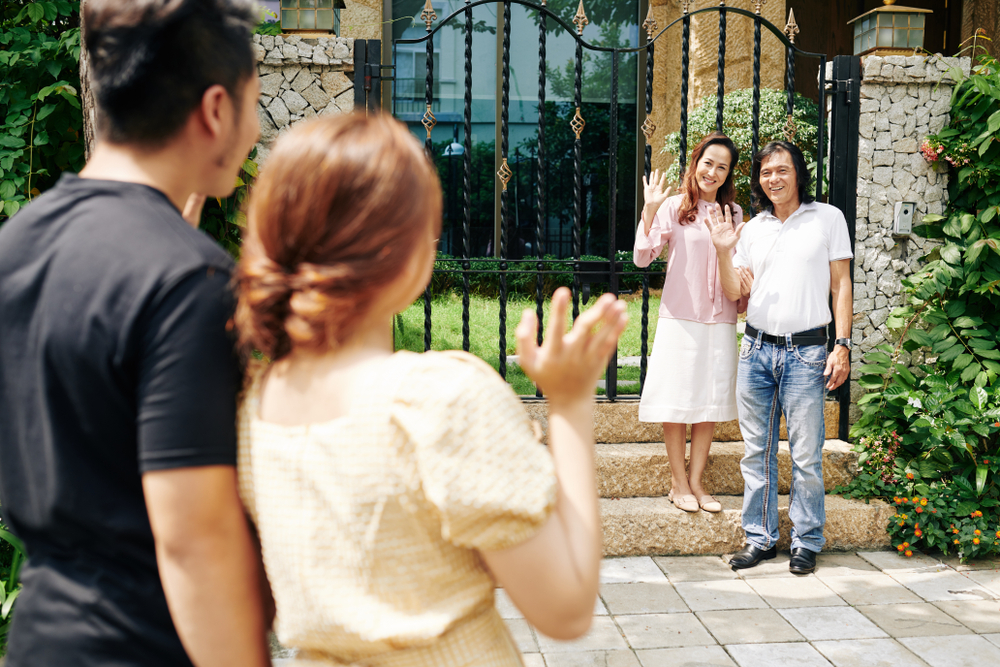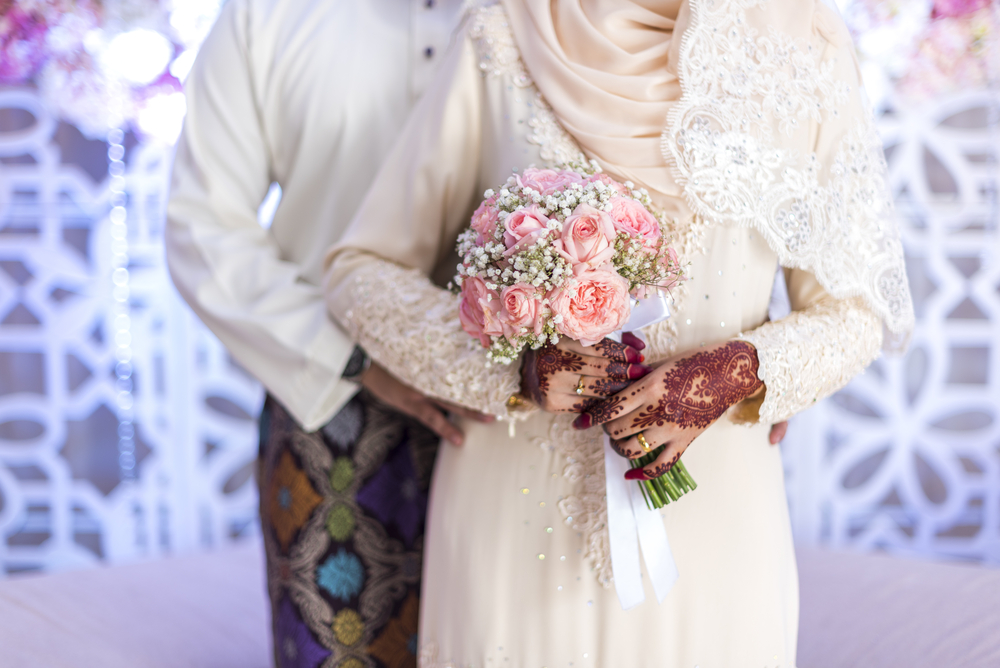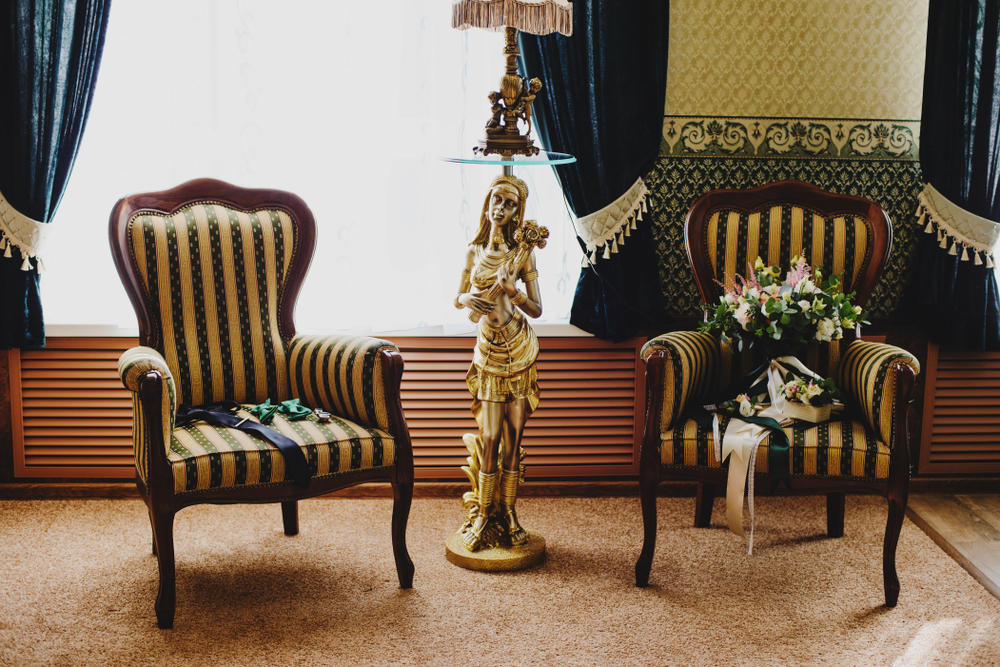Filipino weddings boast a wealth of vibrant traditions that reflect the country’s diverse cultures. In the southwestern region of the Philippines, Tausug weddings are celebrated by one of the largest Muslim ethnic groups in Sulu. These matrimonial celebrations are rooted in the Sunni Islamic faith and reflect the unique customs and values of the Tausug community.
From elaborate rituals to exquisite attire, this Muslim wedding in the Philippines is a captivating blend of spirituality and community. Join us as we delve into the intricate traditions of Tausug weddings, and uncover how their customs beautifully reflect deep-rooted values of love, family, and faith.

An Overview of Tausug Wedding Traditions
Before the Wedding
Typical Filipino Christian weddings involve long wedding checklists that the couple needs to accomplish over several months. Similarly, Tausug weddings in the Philippines go through several steps and stages even before the actual ceremony.
Pagpanilas or Pagpasihil
Tausug wedding ceremonies are seen as an alliance between families and not just the couple. Pagpasihil is the semi-formal negotiation stage between the two families. This is the first step in the marital process and is comparable to the Filipino tradition of pamamanhikan.
The pagpasihil is when the groom’s parents and the groom visit the bride’s house to conduct a semi-proposal. They are also accompanied by intermediaries such as the barangay captain or the imam who heads their religious community.
Pagpangasawa
Pagpangasawa is the official deliberation of the marriage proposal, wherein the man formally expresses his intention to marry a woman. If the proposal is accepted, the dowry will be decided upon.

Pagpanunggu tunang
As a fiancé, the man has to prove that he is a worthy future husband and son-in-law. This is done through pagpanunggu tunang where he performs household chores that will show his virtue, such as gathering firewood and water.
Pagsampang or pagturul taymah
Pagsampang signifies the acceptance of the marriage proposal. This stage often features handing over the dowry. Tausug delicacies like the native pastry bangbang sug and other food and drinks will be brought over to the woman’s family. The finalization of the wedding date, or the pagkawa tugun, will also be decided by the woman’s party.
Paghatud bugas
On the day before the wedding, the groom’s family will deliver commodities requested by the bride’s family. This can include “bugas” (rice), cigarettes, or other goods.

During the Wedding
Tausug traditional weddings can vary slightly in practice depending on the municipality. Regardless, Islamic principles oblige the Tausug to solemnize marriages through the pagkawin ritual.
On the day of the wedding, the bride and her entourage (pandalas) arrive at the venue first. The bridal party will remain in a discrete room until the actual pagkawin. The arrival of the groom and his pandalas will then be announced through the wedding emcees and a pangalay wedding folk dance.
Pagpassal
Before the pagkawin proper, both the bride and groom undergo a symbolic purification and beautification process called pagpassal prepared by the couple’s relatives. The term derives from the “passal” plant, which is used to color the fingernails of the couple. Throughout this ritual, Tausug tales are sung by the pangluluguh or traditional singer.
Pagkawin
The solemnization of the marriage begins with wudhu wherein the bride and groom purify themselves by washing different parts of their bodies.
The couple must also be dressed in customary garments. The Tausug bride wears batawi, which is a long-sleeved blouse decorated with sequins and paired with loose trousers. A circular sash is draped over her shoulder.
On the other hand, the groom dons his lapi made of a long-sleeved shirt and a pair of trousers. He also wears a sash and a cloth belt with a pouch called dulis banding. Both the bride and groom wear traditional headgear.
At this point, consent to the marriage (wali) is given by the bride’s parents and the bride herself. This is extremely important as Tausug weddings are considered unlawful without a wali. Once the bride’s family provides their wali, a representative from the groom’s party will seek the bride’s consent by knocking on the bridal room door.
To signify her consent to the wedding, the bride will give her ring to a pandala, who will then hand it over to the groom’s representative. The representative will then relay the ring to the imam, who will place the ring on the groom’s right middle finger.
The solemnization can now proceed with the guidance of the imam. After making his traditional prayers, the imam will instruct the groom to place his right big toe against the imam’s own. The imam will then perform the religious rites using a white handkerchief. Once the marriage is legalized, the groom is led to the bridal room.

Pagba’tal
This stage is known as the “nuptial touch” and is performed as the bride is sitting with her face turned away from the groom. Accompanied by the songs of the pangluluguh, the groom touches the bride’s forehead three times using a cigarette. Every time the groom’s right thumb touches the bride, the groom drops the cigarette. The cigarette is then picked up until the entire process is completed thrice.
This act signifies the bride’s loss of her virginity. The number three is also significant because in Sunni Islam, many Sunnah acts are advised to be done in threes.
Paggiling
The newlywed couple can now sit next to each other. Because of the conservative personality that is expected in Tausug weddings, the bride will still be seated in a side-view posture. To fix her position, a pandala will turn the bride three times until she is facing forward.
Hutba’ Nika
With the couple seated together, the imam can now deliver the Hutba’ Nika or the nuptial sermon. This is an orientation by the imam that offers guidance to the couple about their responsibilities as husband and wife.

Duwaa Salamat
The couple is then led out of the bridal room to a decorated stage with two chairs placed beside each other. The nuptial meal will then be brought out using three trays, and the imam will lead the duwaa salamat or thanksgiving prayers.
The first tray, dulang pagkawinan, is made up of three layers of rice cooked with coconut milk. The first layer is colored black, the second is white, and the third is yellow. Roasted chicken is placed on top. Boiled eggs are also included, along with some chicken soup. The meal begins with the bride picking out the food she wants to eat, and the groom must pick exactly the same.
The second tray, dulang pamassalan, is served with one roasted chicken, which symbolizes the unity of the husband and wife and their independence from their families. Finally, the dulang pa muhmeen food tray is offered to departed ancestors. The remaining food is offered to wedding guests who hope to be wedded next.
Experience the Beautiful Traditions of Tausug Weddings
In the vibrant tapestry of Filipino traditions, Tausug weddings stand out with their unique rituals and practices. From the mesmerizing pangalay dance to the solemnity of the Hutba’ Nika, Tausug weddings paint a beautiful portrait of love and faith. They serve as a reminder that in the Philippines, love is intertwined with rich community and family cultures.
For more information on traditional and tribal weddings in the Philippines, continue browsing our blog at Nuptials.ph.
Author: Anjenica Durana
Anjenica's biggest dream in life is to go on a great adventure. While still waiting for a tall wizard to knock at her door, or for a fairy to fly through her window, or for her grandmother to reveal their royal lineage (any time now), she works undercover as a writer who pretends to enjoy playing badminton.




